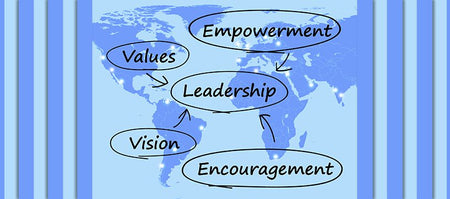Latest Posts

In Your Corner, Leadership and Change Management
Now Is the Time to Ramp Up Our Resilience
We stand at the threshold of a new school year. In the coming weeks, we will be getting acquainted and forming new relationships with our students. We will be starting a new journey of learning and teaching. We will watch our students grow and mature. They will build new skills, gain new knowledge, and build new confidence. These are the reasons we chose to be educators. Few other professions offer such rewards and opportunities to make a difference in the lives we touch.
We also know that the coming year will bring a good measure of stress, pressure, and frustration. These, too, are predictable elements in the lives of educators. However, the impact they have on us and our well-being is within our control. We can allow these experiences to drive our emotions and control our lives, or we can develop skills, habits, and strategies to counter them. Now—before we find ourselves facing the inevitable uncertainty, complexity, and conflicting emotions ahead—is a good time to commit ourselves to becoming a more resilient person and professional.
The good news is that we can learn the skills and develop the habits associated with managing difficult situations. Being resilient is not confined to those who “were born that way.” However, we need to avoid delaying this important work until we are already feeling overburdened with stress and exhaustion.
Starting now before we are fully experiencing the intensity of our day-to-day work can provide the space to develop new skills, try out some new perspectives, and focus on effective strategies that work for us. Ramping up this work now can help us to be better prepared and build our resilience before we begin to feel overwhelmed.
The American Psychological Association identifies four key factors that define resilience: capacity to make and carry out realistic plans, a positive view of ourselves and confidence in our strengths and abilities, communication and problem-solving skills, and capacity to manage strong feelings and impulses. Obviously, the greater our strengths in these areas, the better able we will be to protect our emotional well-being while attending to the needs of our students.
So, how can we develop the resilience necessary to confront and prevail with the challenges that may lie ahead? Here are five strategies to consider.
First, we can build and expand our network of trusting relationships inside and beyond our profession. The more people with whom we can confide and from whom we can receive advice and support, the more options and support we can tap. Often it’s enough just knowing we have someone who is willing to listen, understands us, and can provide us with reassurance and another perspective.
Second, we can identify and set realistic goals in areas of our personal and professional lives over which we have control. When we focus our attention and efforts in areas where we control the key variables, we can build confidence in our abilities and develop a positive view of ourselves, despite what may be happening elsewhere.
Third, we can develop routines to build and protect our emotional and physical health. Physical exercise can do much to counter the impact of stress and frustration. It can lead to better sleep. An exercise routine can also contribute to a sense of control and a positive view of who we are. Yoga, meditation, and even going for regular walks can also provide important benefits. The consistency of a routine can send a signal to our minds and bodies that it is time to relax, even when we are feeling pressure and stress.
Fourth, we can build the habit of focusing on the gap that exists between what happens in our lives and our response or reaction to it. Obviously, we cannot always control what happens around or to us. However, we can always choose what we will think and which actions we will take in response. This insight can provide a sense of control, give us time to manage our emotions, and avoid reactions that can add to our frustrations and feelings of regret.
Fifth, we can accept that we cannot control everything. Obviously, some things in our lives, personal and professional, are beyond our control and influence. Yet, our need to control can leave us frustrated and depressed. The energy we spend wishing things were different and the frustration we allow to build in us can deplete the mental and emotional resources we need to be healthy and happy. Sometimes, our best strategy is to let go and focus elsewhere.
Some of us are about to begin the new year in the next few weeks. Others may have more time before students return. Regardless, the best time to develop the skills, habits, and attitudes to carry us through the coming year is right now. Consider choosing one, two, or three of the strategies and get started.

In Your Corner, Leadership and Change Management
Five Questions Can Launch a Rewarding New Year
One of the unique and energizing aspects of being an educator is that each fall we can begin anew. Most of us will be meeting new groups of students. We will form new relationships. We will begin a new journey of learning. We will meet new colleagues and may join a new professional team. This is a time of excitement and opportunity.
The beginning of a new year also invites us to revisit, reevaluate, and reimagine our approach and commitment to our work and the difference we want to make. We make a lasting impact when we see teaching not just as a job to do, but as a calling and mission to be fulfilled. Each of us is invited to begin our professional journey anew every year.
A close look will reveal that we need to be intentional about what we want to contribute and the difference we want to make. We can quickly fall into old habits and routines without noticing our choices and seizing opportunities available to us. Shifting focus, adjusting behaviors, and increasing our impact require reflection, analysis, and clear intentions. Fortunately, five questions can help us to explore where and how to focus our attention and energy this year.
First, what gifts will I bring? Each of us have gifts we can offer to enrich student experiences and conversations, provide insights, stimulate discussion, and inspire new thinking. Our gift may be to be a better listener and give more opportunities for students and colleagues to express their thoughts and concerns. We may choose to be a better reflector to help others hear themselves and discover their own solutions. It may be that our gift is finding common ground and areas of agreement to allow our team to move forward. Or we may be the one who asks the questions that need to be examined and answered. Our gift may also be exactly what is needed to unlock the gifts and contributions of others.
Second, what role will I play? Is it time for me to take a more active leadership role on my team? Do I need to become a more active mentor for the talents of less experienced educators? Do I need to be a more engaged coach? Or is this the year when I become a more committed and contributing team member? Each of us have roles to play. The choices we make can make our year—and increase the impact we have on student learning.
Third, who will need my support? Now more than ever, we need to support each other. The past year brought loss and grief. Tension and controversy have sapped energy and led to separation and isolation. Now is the time to reach out and be present for those who need a friend, an advocate, or someone to just listen and understand. Our availability and support can make a difference in the lives of those we touch that goes well beyond what we might think or imagine.
Fourth, how will I grow? It has been said that if we are not growing, we are falling back. These are times that challenge and give countless opportunities to all of us, and growth has never been more important. Our students return to school with learning, social and emotional needs, and, in many cases, physical health and safety needs. Issues of equity and social justice demand effective responses. Every student deserves to feel they belong and the opportunity to thrive as a learner, classmate, and unique individual. Our learning can take many forms and lead us down many paths, but growth is what keeps us fresh, energized, and effective in our work and professional relationships.
Fifth, what legacy do I want to leave? We might think that legacy is something about which we should be concerned as we near the end of our careers, but in truth, our legacy is built each day, each week, and each year. How do we want our students to remember their experience with us? What insights, advice, and examples do we want students to recall as they build and live their lives? How will colleagues learn and what will they recall from our time with them? How might our school be different because of our time in it? The most powerful legacies are not found in tangible objects. Rather, they exist in the lives of those we have touched.
As difficult as these times are, they present us with opportunities to make a special difference. We have never been needed more. As we begin a new year, let’s commit to making it the best ever, and commit ourselves to being our best ever.
Share Your Tips & Stories
Share your story and the tips you have for getting through this challenging time. It can remind a fellow school leader of something they forgot, or your example can make a difficult task much easier and allow them to get more done in less time. We may publish your comments.
Send Us An Email













